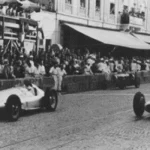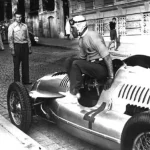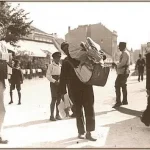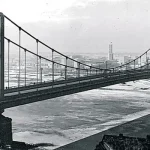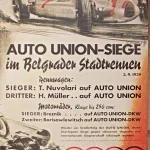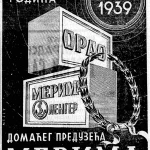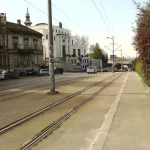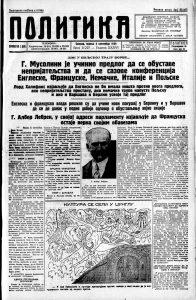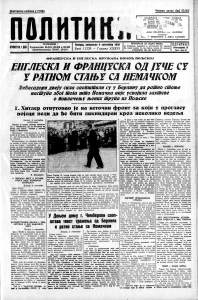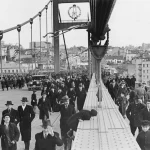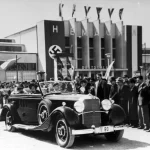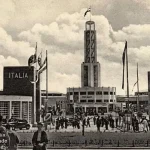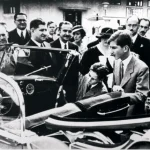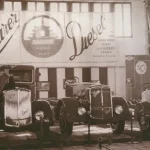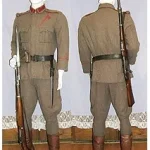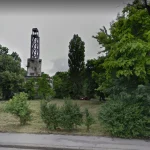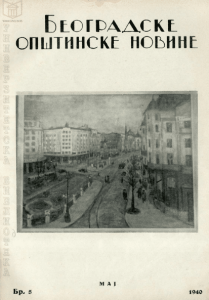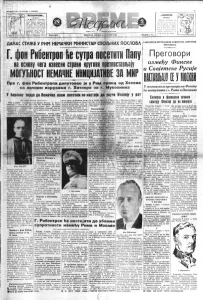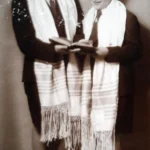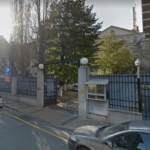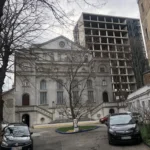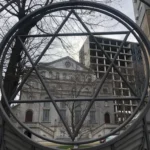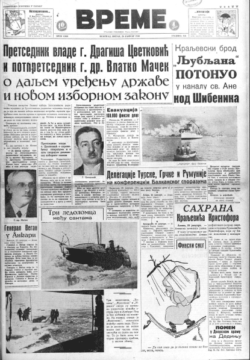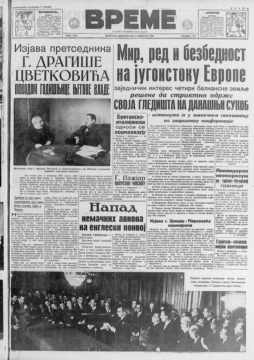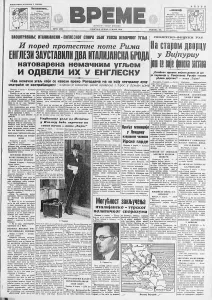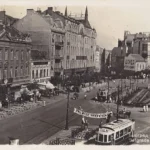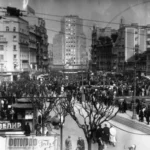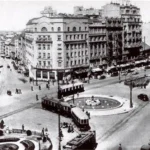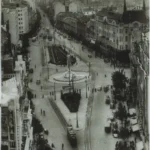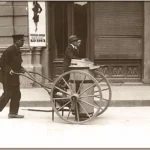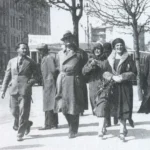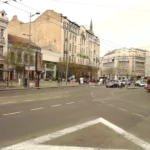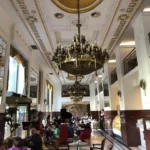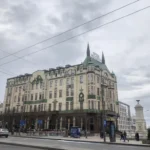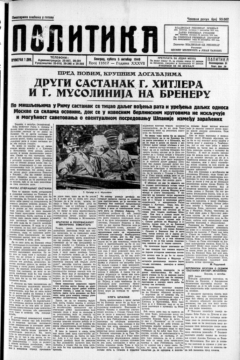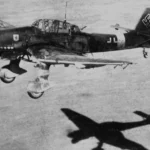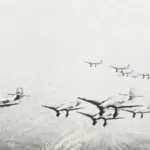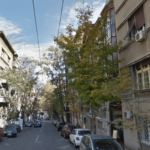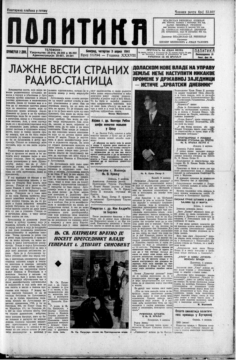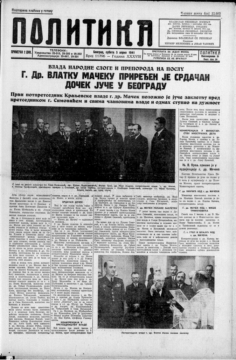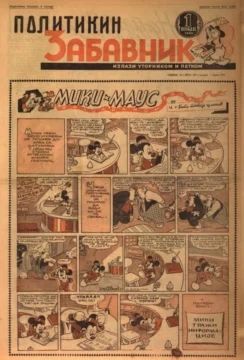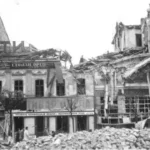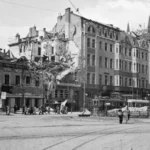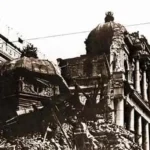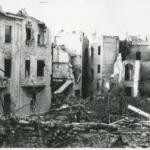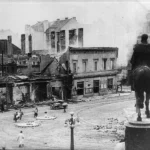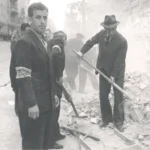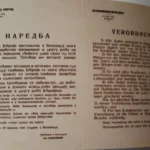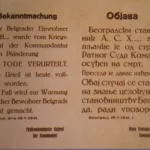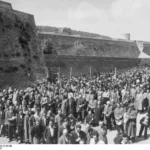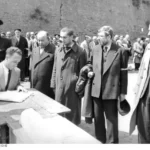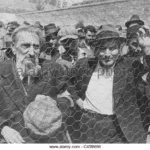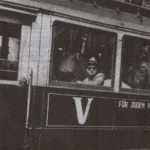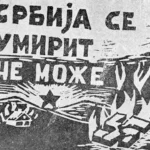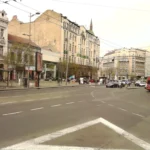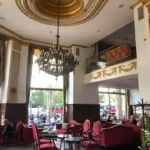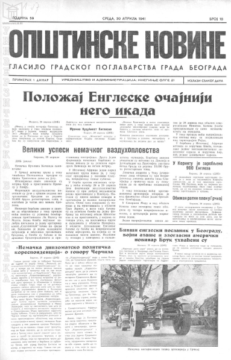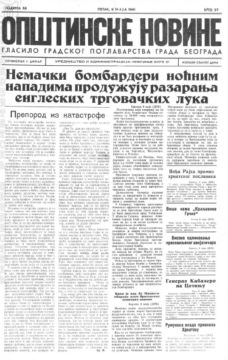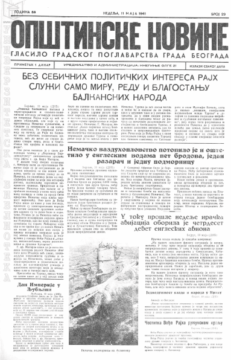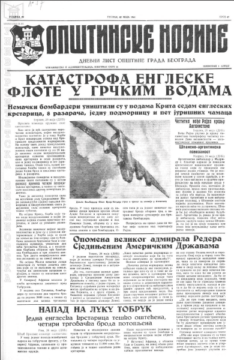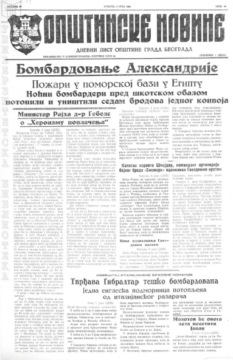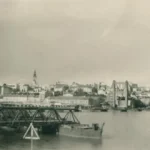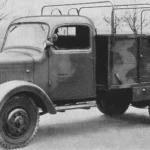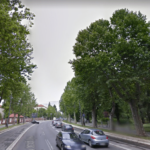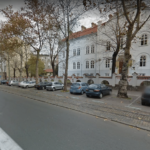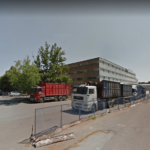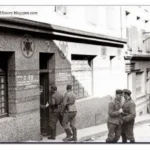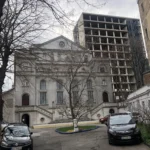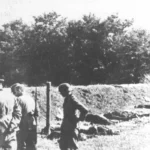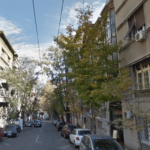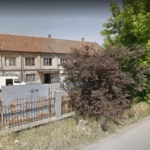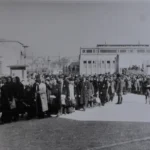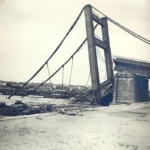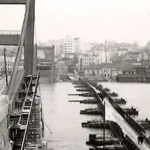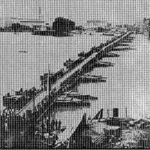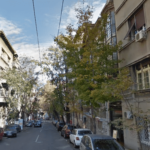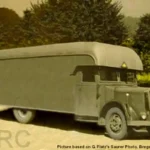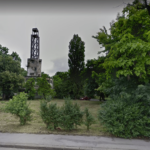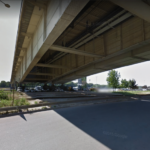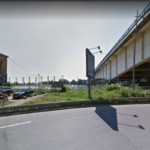A Story About The Race Red Car: For Teachers
Novel is also available as a PDF or PowerPoint presentation
Scene 1: A Day at the Races
Historical records
Historical newspapers
Investigative tasks
Research tasks
- Investigate why September 3rd is important to the beginning of World War II.
- What was the position of the Jews in Nazi Germany in that historical moment?
- Analyze posters from the picture and conclude why pre-war Belgrade was considered one of the important cultural capitals in the Balkans?
- German drivers Manfred von Brauchitsch and European champion Herman Lang, both from the German Mercedes-Benz team, were considered favorites at the big car race in Belgrade. But the race took an unexpected, dramatic course and the victory eluded both of them. Investigate who won the race and what happened? Did any Serbian driver take part in the race? How long was the trail around Kalemegdan? What is the fastest speed that the race cars reached during the race? How many spectators attended the race?
- Did any French and English driver take part in the race? Explain why?
- Investigate what passenger cars looked like at the time. Which car models were the most popular in Serbia and in Europe? (Suggestion: as part of the research you can visit the Auto Museum in Belgrade).
- Investigate who Sava Šumanović was?
Historical newspapers
- Newspaper “Политика“ (Politika) (September 3rd and 4th) and newspaper “Време” (Vreme) from September 3rd and 4th,1939.
- Find and analyze car racing news. Analyze the other most important news published in newspapers in those two days.
- Find news about the opening of the exhibition of painter Sava Šumanović. How many works were displayed? To whom is all the income from the exhibition intended for?
- “Vreme”, March 9th, 1939 page 10 – “Пољска још није отказала утакмицу са Југославијом” (News of the match between Yugoslavia and Poland)
- Explore other articles in that issue. Conclude why it is uncertain whether the match will take place.
- Browse other articles in this newspaper.
- What can we conclude about the political situation in the world, in Yugoslavia and Serbia?
- What can we conclude about everyday life?
Map
Scene 2: Visiting the Car Exhibition
Investigative tasks
Research tasks
- When was the Belgrade Fair founded?
- Why is the Belgrade Fair considered one of the most significant modernization achievements of pre-war Belgrade?
- What was the position of the Jews in the Kingdom of Yugoslavia when World War II began in Europe?
- What was the position of the Jews in Germany in the same time?
- Investigate where, when and how the first television program in the Balkans was broadcast? (Suggestion: research online databases of historical newspapers from September 9th-19th 1938)
- Investigate what all the exhibitions were like and what various technical and other novelties were presented at the Fair during its existence. Choose a few examples and make a presentation.
On the location
Investigate what the Belgrade Fair looked like before World War II. Find historical photographs and a map of the various pavilions of the fair on the internet. Some of the buildings were demolished after the war, some new buildings were built, and some of the original ones from that time are still there. In the location, find historic buildings that existed before the war during the Belgrade Fair. Investigate where the entrance to the Fair was, and which way the citizens of Belgrade came to visit the Fair. Make a photo report.Historical newspapers
- Newspaper “Београдске општинске новине” (“Belgrade Municipal Newspaper“), May 1st, 1940 page 7 – ”Поводом овогодишњег Београдског пролећног сајма” (“On the occasion of this year’s Belgrade Spring Fair“)
- Investigate in which pavilions Alexander and his father could see cars.
- Explain what difficulties the organizers of the Fair faced. They even thought about whether it should be organized at all that year.
- Investigate how many visitors were at the spring Belgrade Fair? Give some examples of domestic and foreign companies that were there, as well as the products they exhibited at the spring Fair.
- Newspaper “Време” (“Vreme”), March 10th 1940. column ”Београдски живот” – (“Belgrade Life”) –”Предавања” (“Lectures”), as well as newspaper “Политика” (”Politikа”) from the same day.
- Investigate what Mr. Demajo was lecturing about in the Jewish Library.
- Browse other articles in this newspaper.
- What can we conclude about the political situation in the world, in Yugoslavia and Serbia?
- What can we conclude about everyday life?
Map
Glossary
Jewish Library
(in Belgrade) – library and cultural center that worked in the Jewish Home at 71 Kralja Petra Street in the period from 1929 to 1941 and which was known for popular lectures given by prominent members of the Jewish community but also all important intellectuals of interwar Belgrade.
Scene 3: Bar Mitzvah
Investigative tasks
Research tasks
- Search the internet and find out what a Bar Mitzvah is?
- Search the internet and figure out what the difference is between a traditional Jewish calendar and the one we use? What is the name of the calendar we use? Investigate and list some of the different calendars used in the world today?
- Investigate why Pavle can no longer study in Prague, but is thinking about studying in Switzerland?
- Why are Jewish refugees from Vienna coming to Belgrade?
- Kristallnacht and Anschluß Österreichs are mentioned in conversations in front of the Synagogue. Explore those events. Why are Belgrade Jews worried?
Historical newspapers
- On that day (May 12th, 1940) an article was published in newspaper ”Политика” (Politika) stating that Charlie Chaplin was making a new film “in utmost secrecy.”
- Investigate which movie it was? Which scene is best known in this film?
- Think about why Charlie Chaplin made that film at that time and what did he want to say with it?
- See the section “Женски свет“ (“Women’s World”) in the newspaper ”Politika” from that day.
- Investigate how people dressed in Belgrade and other European cities at that time
- Review the breaking news published in ”Politika” that day and analyze what was happening in Europe at that time.
- Compare the sections “Женски свет“ (Women’s World), ”Шта мора знати савремени борац” (“What a Modern Fighter Must Know”), and ”Туђи хумор” (“International Humor”). Think about what connects them.
- Conclude the extent to which the war raging in Europe is present in the newspapers. Explain your conclusions.
- Think about whether the entire situation worried the citizens of Serbia? Why?
- Newspaper ”Време” (Vreme), January 26th, 1940. – “У Петровграду је јуче суђено секретару Љотићевог “Збора”” (Trial in Zrenjanin against the antisemitic Newspaper „Ljotićev zbor” run by the fascist organization led by Dimitrije Ljotić)
- ”Vreme”, February 5th, 1940. – “Скупштина Јеврејске читаонице у Београду” (Report of the annual assembly of the Jewish Library in Belgrade)
- Investigate what kind of newspaper “Ljotićev zbor” is? Why was the editor in chief of “Ljotićev Zbor” tried in Zrenjanin? Which experts were summoned by the court to use their expert knowledge to determine whether the allegations of the accused were true? What conclusions did they present to the court? What is such a criminal offense professionally called? Is the law against such acts valid in Serbia today?
- Investigate and conclude what was the position of the Jewish community in Serbia at that time.
- ”Vreme”, March 6th, 1940. – “Велика афера са лажним пасошима” (Fake passports for Jewish refugees)
- ”Vreme”, March 13th, 1940. – “Због фалсификовања држављанства…” (The epilogue of the affair with forged passports)
- ”Vreme”, April 2nd, 1940. – “Двеста педесет хиљада румунских Јевреја треба да се иселе у Палестину” (250,000 Romanian Jews are preparing to emigrate to Palestine)
- Investigate who the defense attorney is at the trial for obtaining fake passports.
- Why do Jews from various European countries need fake passports? Where did they come from in Yugoslavia?
- Investigate what the situation is for the Jewish community in Germany, Austria and Romania.
- Browse other articles in this newspaper.
- What can we conclude about the political situation in the world, in Yugoslavia and Serbia?
- What can we conclude about everyday life?
Map
Glossary
Bar Mitzvah
Jewish religious adulthood. When they turn 13, Jewish boys become adults; responsible for their actions and considered equal members within the community. On that day, the boys are invited to read the Torah for the first time, and from that day on they are counted in the minyan–the number of 10 adult Jews that are necessary for the entire service to take place. This ritual also exists for girls, it is called bat mitzvah and is performed when a girl turns 12 years old.
Synagogue
(From Greek συναγογε „скупштина, окупљање“ – heb. Beit Knesset (בית כנסת) “gathering house” a space where, in Judaism, prayer takes place and which, outside of service, can also be used for concerts, lectures and other types of gatherings.
”Eshkenazi’s rite” / Eshkenazi
It is common today to say Ashkenazi. Ashkenazi Jews are those who settled in Central and Eastern Europe and Russia and whose mother tongue is Yiddish–a type of German language that is mixed with Hebrew and Slavic words. Ashkenazi culture is known for cultivating humor and specific music called klezmer. Ashkenazi service differs from Sephardic not only in the language used but also in the melodies. Apart from the Ashkenazi, another large group of Jews are the Sephardim, who arrived in the Balkans from Spain. The mother tongue of the Sephardic Jews is called Ladino–a Spanish language that is mixed with Hebrew. Both the Sephardim and the Ashkenazi spoke Serbian in Serbia.
13th of Sivan 5684.
June 15th 1924. The date of the foundation stone being layed for the Ashkenazi synagogue Sukkat Shalom in Belgrade. Jews count time according to the Jewish calendar. The months of the year have the following names: Tishri, Heshvan, Kislev, Tevet, Shevat, Adar, Nisan, Ijar, Sivan, Tamuz and Elul. The year 2017 is 5777 according to the Jewish calendar.
Mikvah/Mikveh
(hebrew: מִקְוֶה / מקווה) – ritual bath. A large number of rituals in Judaism are preceded by immersion in water in a ritual bath. The mikvah is built according to strictly established rules, and in addition to standing water, it must also have “living water”, ie. rainwater or some free water flow. Not only are people immersed in a mikvah, but also– on the eve of certain holidays, e.g. Pesach–utensils are cleansed.
”…synagogue in Belgrade and the school, offices, mikvahs, gym and apartments…”
Due to strict Shabbat regulations, during which much work is forbidden such as driving, carrying things and even excessive movement, it is common for the apartments for rabbis, gabayas and cantor–that is, for all those necessary for the service–to be in the same building. For religious reasons, the synagogue also has a ritual bathroom–mikveh, and for practical reasons, a school (teaching is allowed on Shabbat), social rooms and an office.
Gabbai
a person who assists the rabbi during the service and may have other, administrative duties in the synagogue.
Rabbi
at Jews, a Torah teacher. In the synagogue, the rabbi usually leads the service, takes care of the implementation of all ritual laws and organizes various types of teachings.
Tallit
a white prayer scarf with blue or black stripes that is draped over clothes during service. The boys receive it as a gift after the bar mitzvah ritual.
Kippah
a ritual cap worn by Jews during the service and at the cemetery, orthodox Jews wear it all the time. It has the function of constantly reminding man of the presence of God.
Mazal tov
an expression that wishes good luck.
Shabbat
Saturday, the seventh day, the day of rest, the greatest holiday in Judaism during which physical work and creative work and business activity cease. It starts before sunset on Friday and lasts until after sunset on Saturday. According to the first book of Moses, which is also called Genesis, the Lord created the world in six days and then rested on the seventh day. For Jews who live strictly according to the regulations of Judaism, any work on this day is strictly forbidden: lighting a fire (in modern times even lighting light bulbs, calling an elevator, watching television, taking photos, even walking by a self-opening door), carrying, paying and writing (reading is allowed). Even walking is limited. The regulations regarding the Shabbat are particularly strict and very complex and it takes a couple of years of study to master them properly. Shabbat regulations can be broken to save a life or help someone in need.
“… fleeing towards Palestine”
Palestine, ie. Israel, is the historical home of the Jews who settled in it after leaving Egypt sometime in the 13th century BC. It was then called Kanan. In it, the Jews founded their first state and built two temples. After the demolition of the Second Temple, in 70 AD. by the Romans, the Jews were expelled from their ancestral homeland and found themselves in diaspora, scattered all over Europe and the world. Until 1918, it was part of the Ottoman Empire. Before World War II, this territory was under British rule. Since the end of the 19th century, more and more Jews from Europe and America went to Palestine, which at that time was sparsely populated, mostly desert land, bought land from Arab landowners and began to irrigate and cultivate it, thus creating the first urban settlements and cities.
Scene 4: Hanukkah 1940
Investigative tasks
Research tasks
- Search the internet for what Hanukkah is? Why are those days celebrated?
- What are the traditions related to this holiday?
- Investigate what toys looked like at the time? Compare with toys today. (Suggestions: visit the Museum of Science and Technology in Belgrade and view the collection in the department of the Toy Gallery.)
- Find out more about the Tivar store. What kind of company was it and what was its main activity?
- Find the “Шонда” (Šonda) advertisement in the illustration. Investigate what “Šonda” is? Who was Mihailo Mika Šonda and what was his fate?
- Which tram lines were running through Belgrade at that time? Investigate how city traffic in Belgrade developed before World War II? How many trams were ruined in the bombing of Belgrade in 1941?
- Compare Terazije before the war and today. Do trams still pass through Terazije even today?
- For Hanukkah, the “hanukkiah” candlestick is used, which has eight holders and a ninth in the middle. But in addition to the hanukkiah, which is used for the Hanukkah holiday, Jews use other specific candlesticks on other occasions. Investigate what a candlestick is, what it is called and when it is used.
Historical newspapers
- 1.Newspaper ”Политика” (Politika) October 5th, 1940 page 6.
- “Влада је прописала Уредбу о мерама које се односе на Јевреје” (Analyze the Decree Restricting Jews in Yugoslavia from Trading in Food).
- ”Politika” October 6th, 1940 page 8.
- “Данас ће бити објављена Уредба о школовању ученика јеврејског порекла” (Analyze the Decree on the Restriction of Education of Persons of Jewish Origin).
- Newspaper ”Време” (Vreme) October 6th, 1940 page 6 and page 7.
- Analyze these two pages of newspapers.
- ”Vreme” October 16th, 1940 page 6.
- Analyze the articles ”Сомборску чаршију држе Јевреји” (“The Sombor Bazaar is Held by Jews“) and ”Без продужетка дозволе страним држављанима Јеврејима у Скопљу” (“ No Extension of the Permit for Foreign Jewish Citizens in Skopje“)
- Remember the articles from the last scene: “Vreme” January 26th, 1940. – Trial in Zrenjanin against the antisemitic Newspaper „Ljotićev Zbor”, and “Vreme” February 5th, 1940 – Report of the Annual Assembly of the Jewish Library in Belgrade. Compare and conclude how individual articles present Jews in Yugoslavia in February and how they portray them in October 1940. Consider what influenced this change.
- Browse other articles in this newspaper.
- What can we conclude about the political situation in the world, in Yugoslavia and Serbia?
- What can we conclude about everyday life?
Map
Glossary
Hanukkah
an eight-day holiday of light and freedom, is celebrated on the 25th day of the Jewish month of Kislev (usually the month of December) as a remembrance of the victory of the Maccabees over the Greek army in the 2nd century BC. After the victory, the purification and consecration of the Temple began. The oil found for the great menorah in the Temple was enough for only one day, but it burned for a full eight days and nights– exactly as long as it took to prepare a new amount of oil. The victory of the Maccabees over the pagan Greek army, as well as the consecration of the Second Temple, marked the renewal of Judaism and the establishment of the political independence of the Jewish people. Therefore, the holiday of Hanukkah is also a celebration of Jewish national independence.
Hanukkiah
octagonal candlestick ie. a nine-pointed candlestick lit for Hanukkah, one more candle is lit every day. The candle in the spark plug in the middle is used to light the other candles in the spark plugs. A Hanukkiah is never used to light a room.
Nes gadol haya sham
It is customary on Hanukkah to play with a four-sided humming top with the Hebrew letters nun, gimel, alef and shin, which represent the beginning of the words “nes gadol, haja sham”– “A great miracle happened there” (This sentence is used in the diaspora, in Israel it reads “nes gadol haja po“)–“a great miracle happened here”. The children throw this humming top, which is called a dreidel in Yiddish and sevivon in modern Hebrew.
Judah Maccabee
the son of the priest Matthias of the Hashmonean dynasty and his four brothers organized a resistance movement against the Greek occupation in the 2nd century BC. Applying the tactics of guerrilla warfare, the Maccabees managed to expel a much more powerful Greek army from their country. There are several interpretations of where Judah’s nickname Maccabi comes from (aram. Mаqquаbа, hebr. Makebet – hammer) and what it means. According to one interpretation, this nickname came about because of the strategy that Judah Maccabi used when, like a sledgehammer, his army ran in and inflicted heavy losses on opponents during short conflicts. According to other interpretations, this nickname is an acronym of a verse from the Torah, which Judas constantly uttered while encouraging his soldiers on the battlefield, but also an acronym for the full name of his father Matthias. (Mattatyahu Kohen Ben Yochanan).
Temple – Jerusalem temple
(hebr. בֵּית־הַמִּקְדָּשׁ, Bet HaMikdash) is a series of buildings located on the Temple Mount in Jerusalem. According to the Bible, the First Temple was built by King Solomon in 957 BC. and destroyed in 586 BC. by The Babylonians. The temple was rebuilt in 538 BC. The last great restoration is related to Herod the Great, who restored the temple during the 1st century BC. That Second Temple was destroyed by the Romans in 70 AD. Until its destruction, the temple was the central point of Jewish religiosity. Of the architectural structure of the temple, only the western wall of the platform, known as the Wailing Wall, remains today. On the plateau on which the temple once stood, today there are the mosques of Al Aqsa and the Dome of the Rock.
Scene 5: Bombing of Belgrade
Historical records
Historical newspapers
Investigative tasks
Research tasks
- When did World War II begin in Yugoslavia?
- Investigate on the internet what were the causes of the Axis Powers’ attack on Yugoslavia.
- Why was the codename for the bombing of Belgrade “Operation Revenge”?
- What time did the bombing of Belgrade start? Think about why the Germans bombed just then.
- Investigate who Brick Bradford was.
Historical newspapers
- Newspaper ”Политикин забавник” (“Politikin zabavnik”)
- Find on the internet ”Politikin zabavnik” which Alexander reads with Selma. On what date did that issue of ”Политикин забавник” come out? What comics appeared in that issue? Investigate when the first issue of “Politikin zabavnik“ came out?
- Newspaper “Политика“ (Politika) April 3rd, 1941 and April 5th, 1941
- Find the articles ”Лажне вести страних радио-станица” and ”Докле у ширењу неистина о нашој земљи…” (Lies in foreign newspapers about the situation of the German minority in Yugoslavia). Conclude why some foreign newspapers publish such articles about Yugoslavia?
- Find the articles ”Уредба о војној дисциплини” (Decree on Military Discipline), ”Више него икад, данас смо уједињени” (More than ever, we are united today) and ”Велики војни указ – унапређен велики број активних и резервних војника” (Large Military Decree: A Large Number of Active and Reserve Soldiers Promoted). Conclude to what extent the danger of war had seriously approached Yugoslavia.
- Find the article ”Француска влада и даље уклања Јевреје из државне службе” (The French Government Continues to Remove Jews from the Civil Service).
- Browse other articles in this newspaper.
- What can we conclude about the political situation in the world, in Yugoslavia and Serbia?
- What can we conclude about everyday life?
Map
Scene 6: Occupation
Investigative tasks
Research tasks
- Investigate on the internet how many victims there were in the bombing of Belgrade in 1941. What happened to the National Library building and to the books and historical documents of inestimable cultural value that were kept in it? What happened to the Zoo?
- Who are the Volksdeutscher?
- Why did the Germans ask for Jews to register? Why did they have to wear yellow ribbons? What do ribbons symbolize?
- List all the restrictions imposed on Jews on the basis of orders from the occupying authorities.
- Research on the internet for what the inscription “V” on the tram means? Think about why the occupiers hung flags with that sign on the streets and buildings and on the trams in Belgrade?
- What was the goal of the occupiers’ repressive measures (threats, arrests, hangings, public executions) against the civilian population?
- What actions against the occupier and their helpers did the resistance movement organize in Belgrade during the summer of 1941? What are the goals of these actions? List a few concrete examples of resistance movement actions.
- Analyze and compare scene 4 and scene 6. What does Terazije look like before and after the occupation? What kind of posters are pasted on the pillars?
On the location
Historical newspapers
- Newspaper ”Општинске новине” (“Municipal Newspaper“), April 26th, 1941
- State what anti-Jewish measures are published in this issue.
- Analyze classified ads on page 4 and conclude where so many ads of this kind come from.
- “Opštinske novine“, April 30th, 1941
- State what anti-Jewish measures are published in this issue.
- Analyze ”Саопштење о правним прописима које издају немачки заповедници” (Notice of Legal Regulations Issued by German Commanders).
- ”Opštinske novine” May 9th, 1941
- State what anti-Jewish measures are published in this issue.
- “Opštinske novine“, May 11th, 1941 number 29.
- Analyze the introductory article ”План за операције на Западу…” (“Plan for operations in the West… ”) and some of the articles on page 1 and page 2. Consider whether these articles objectively convey the real state of affairs? Investigate what propaganda is and what distinguishes it? Investigate who was the most famous creator of propaganda in Nazi Germany.
- See the ad under “Miscellaneous” on page 4 in German and Serbian. Notice the discriminatory elements in the ad. What elements of Nazi ideology permeate this ad?
- “Opštinske novine“, May 27th, 1941 number 35.
- State what anti-Jewish measures are published in this issue.
- Analyze what kind of program is played on the radio during the occupation.
- Read the warning of the Regional Command to the citizens of Belgrade regarding the treatment of German soldiers. Conclude what kind of atmosphere reigns in Belgrade and what is the relationship between the occupiers and the population of the city?
- Investigate who Dragomir Dragi Jovanović was. He is the signatory of several orders published in this issue.
- ”Opštinske novine” June 2nd, 1941 number 51 page 3.
- Read the report about the movie “Вечити Јуда” (Eternal Juda). Conclude for what purpose did the Film Department of the German Ministry of Propaganda make this film? Why are Jews portrayed and described as “not human beings but parasites”? Think about why such a film is being shown in Serbia at this very moment.
- ”Opštinske novine” June 7th, 1941 number 56.
- Find the order that all Jews must report to the police in Tasmajdan. Conclude for what purpose were the lists of Jews made?
- Find an order for citizens to report radios. Think about why the occupier demands that all radios register?
- Browse other articles in this newspaper.
- What can we conclude about the political situation in the world, in Yugoslavia and Serbia?
- What can we conclude about everyday life?
Map
Scene 7: The Escape
Investigative tasks
Research tasks
- Why did the Jews have to report to the assembly point in Tasmajdan every morning?
- Explain what the order “100 for one“ meant?
- Why are they being transported to Autokomanda? What was there during World War II?
- When he jumped out of the van, think about where Pavle could have escaped? Think about where he was until he reached the partisans? Did anyone have to help him with that?
- Investigate what the recognition of the “Righteous Among the Nations” is? Give some examples of “Righteous” people in Serbia.
- Analyze which same character appears in illustrations 2, 4, 6, and 7, other than Alexander’s father? Analyze what his role was before and during the occupation?
On the location
Make a photo report on scene 7:- Where the Jews checked in every morning
- Where they were forced to work during the day
- Where Pavle jumped out of the van and escaped. We cannot know exactly where to Pavle escaped because we have no information about that. Make an analysis of the location and make a photo story about which way Pavle may have escaped to and where it was most convenient for him to hide until the Germans gave up the chase and drove on with the rest of the prisoners towards Topovske Šupe.
Map
Glossary
Shabbat
Saturday, the seventh day, the day of rest, the greatest holiday in Judaism during which physical work and creative work and business activity cease. It starts before sunset on Friday and lasts until after sunset on Saturday. According to the first book of Moses, which is also called Genesis, the Lord created the world in six days and then rested on the seventh day. For Jews who live strictly according to the regulations of Judaism, any work on this day is strictly forbidden: lighting a fire (in modern times even lighting light bulbs, calling an elevator, watching television, taking photos, even walking by a self-opening door), carrying, paying and writing (reading is allowed). Even walking is limited. The regulations regarding the Shabbat are particularly strict and very complex and it takes a couple of years of study to master them properly. Shabbat regulations can be broken to save a life or help someone in need.
“They are purposely holding us on Shabbat!”
Shabbat is the most important part of the week during which work is strictly forbidden. By forcing the Jews to work on the Sabbath, the Germans wanted to especially humiliate and injure them.
Scene 8: The Synagogue during Occupation
Investigative tasks
Research tasks
- Investigate more about the everyday life of the citizens of Belgrade during the occupation. What difficulties had befallen them? Conclude how the Jews managed and survived during the occupation, given that they were denied many rights. Think about which anti-Jewish measures and orders particularly affected the Jews when it came to supplies.
- What was the purpose of the Synagogue during the occupation? Why did the Germans choose the Synagogue building?
- Investigate whether that building still exists today and what is its purpose?
- Compare the situation in which the Jews found themselves before and after the occupation through a comparative analysis of scenes 2 and 8. Analyze the meeting of Aleksandar’s father Rihard with Mr. Demajo at the Belgrade Fair (scene 2) to how Alexander’s mother prepared to leave the apartment and how she felt on the street (scene 8).
- Compare the illustrations of scene 3 and scene 8. Describe the difference. Explain what happened.
- Investigate what Rosh Hashanah is and what customs are associated with that holiday.
On the location
Map
Glossary
Rosh Hashanah, Jewish New Year.
It is celebrated on the first and second day of the seventh Jewish month of Tishri. During this holiday, it is customary to eat food that has a certain symbolism, such as apples and honey–to make the year sweet. The head of a lamb or fish is also eaten in order to “be the first, not the last” in the next year.
The Star of David
hexagram, a common symbol of Jewish identity and Judaism in modern times, which is also found on the Israeli flag. It is interesting that this symbol appears as exclusively Jewish only from the 19th century. Before that time, it could often be found as a decorative element in churches.
Shanah Tovah
New Year’s congratulation “Good year!”
Scene 9: Parting with the Father
Investigative tasks
Research tasks
- What was the primary purpose of Topovske Šupe concentration camp?
- What were the motives that led the Germans to shoot Jews in occupied Serbia?
- Who were the prisoners in Topovske Šupe camp?
- Analyze which same character appears in illustrations 2, 4 and 6, and how we can conclude that he was also imprisoned in Topovske Šupe camp? Conclude why is he imprisoned.
- Investigate the location of Topovske Šupe camp? What is there today?
- The day before, on September 29, 1941 one of the most horrific crimes against Jews during World War II took place in another country. Investigate which crime it is. Investigate where the mass killings of Jews in Eastern Europe took place from the beginning of Operation Barbarossa (the attack on the Soviet Union) till the end of October 1941.
- According to Jewish belief, Yom Kippur is a day when a person may pray for forgiveness of vows that he cannot fulfill. What vow is Rihard talking about? Why does he think he will not be able to fulfill that vow? Think about why Rihard says that “there is no time” for Alexander to be a child anymore?
- Investigate why Yom Kippur is considered one of the biggest Jewish holidays.
- Who was Jonah according to biblical tradition?
On the location
Map
Glossary
Ner akhayim! (For life) Ner neshamah! (For soul).
On the eve of Yom Kippur, candles are lit for life and health, and for the memory of the souls of deceased parents. Both candles must be so big that they burn the whole holiday.
Erev Yom Kippur
every Jewish holiday begins on the eve of the day it is celebrated. Erev means evening. So, Erev Yom Kippur is the evening before the Yom Kippur holiday.
Yom Kippur
after the Shabbat, this is the most important holiday/day in Judaism. It is a day of repentance during which, with the strictest fast without food and water, people repent for everything they did badly in the previous year and ask the Lord to write them in the “book of life.” It is also a day of reconciliation and forgiveness. It is celebrated on the tenth day of the seventh month of Tishri. Yom Kippur is the end of a ten-day cycle of repentance that begins on Rosh Hashanah.
Nineveh, the city of sin and ungodliness, Jonah and the Fish
Nineveh, the ancient Assyrian city of Upper Mesopotamia, was founded in 7 BC. and was the largest city in the world. According to the biblical book of Jonah, the Lord intended to destroy the city of Nineveh because of it’s sins. So he sends the prophet Jonah to tell the citizens of Nineveh, but Jonah tries to avoid it by fleeing across the sea. At sea, the ship experiences a great storm and the sailors throw Jonah into the sea, wanting to avoid God’s wrath. In the sea, a large fish (whale) swallowed Jonah. Jonah spends three days in the womb of a big fish, repents and is saved. He then goes to Nineveh, which is spared the wrath of God because its citizens have repented.
”… forgive me for the vow I made …”
on Yom Kippur, the vows made by a person in previous years are forgiven, whether they are real or symbolic.
Lo Alehem
(sin) not on your soul (but on mine), that is, “I take sin instead of you”.
Barukh Shem kevod malkhuto le-olam va-ed!
Blessed be his holy name and his kingdom forever
Kol Nidrei
all vows. The opening words of the chanting prayer that begins the Yom Kippur holiday. In it, one prays to the lord to forgive the vows made in the previous year.
Scene 10: Departure to the concentration camp at Sajmiste
Investigative tasks
Research tasks
- Why is December 8th considered one of the key dates when we talk about the Holocaust in the area of Serbia under the German occupation?
- Investigate what previously happened to most Jewish men in Serbia?
- State what the Germans ordered the Jews to take with them when registering in the yard of the Special Police in George Washington Street.
- Conclude why the Germans asked the Jews to “lock the apartments well” and why they were ordered to hand over the keys? Investigate what happened to Jewish property afterwards?
- Investigate what is today in the place where the Special Police for Jews used to be?
- Investigate when and how King Alexander Bridge was demolished?
- What do you think why Alexander left his red car to Bogdan?
- Another event that happened the day before, far from Belgrade, practically on the other side of the planet, was of great significance for the further course of World War II. What event is it? Conclude why this event is important for the further course of World War II.
On the location
- from their apartment
- to the Special Police for Jews,
- to the place where the pontoon bridge next to the demolished King Alexander Bridge was
- all the way to the Jewish camp at Sajmište.
Map
Scene 11: The Gas Van
Investigative tasks
Research tasks
- For what purpose was the camp at “Staro Sajmište“ (“Old Fairground“) established?
- Investigate where the Germans first used gas vans to kill detainees.
- What were the names of the two SS officers who drove the gas van. Why did the German officer hand out candy to the children when entering the gas van?
- What brand was the gas van? Where did Alexander see a bus of the same brand earlier in the story?
On the location
Map
Glossary
B’ezrat Hashem
with God’s help.
Scene 12: New Belgrade
Historical records
Investigative tasks
Research tasks
- Why is October 20th an important date in the history of the city of Belgrade?
- Which military units took part in the struggle for the liberation of Belgrade?
- Among the characters we met in the story, analyze who of Pavle’s family perished in the Holocaust?
- How did Pavle manage to survive the war, while practically all of his family members were killed? Investigate the surviving strategies of the Jews in occupied Serbia? Give a few examples.
- Conclude in what way Pavle and Bogdan contributed to the preservation of the memory of the victims of the Holocaust with their works and in overcoming the consequences of war and suffering?
- Compare the illustrations of scenes 10, 11 and 12. Explain in your own words what is happening in those illustrations.
